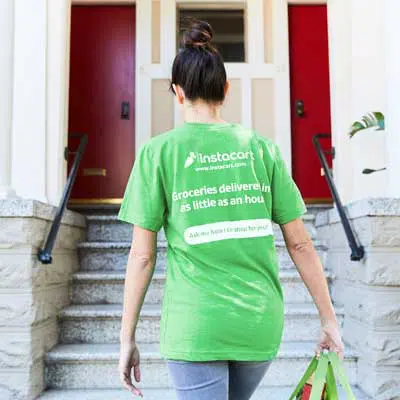Consumers shopping online are more than likely buying digital goods and services, suggest the results of “The Global Rise of Digital Goods and Services” report from the First Data unit of Fiserv Inc.
Released Wednesday, the survey by Forrester Research Inc. of more than 6,000 online adults around the world found that 74% of online purchases worldwide were for such goods and services.
On-demand services, such as ridesharing and restaurant and food delivery, were important factors. In North America, consumers made an average of six ride-share transactions and six meal-delivery or grocery shopping purchases in the past 12 months. At the top were Malaysian consumers who made the most ride-share transactions, at 13, and Brazilians who made an average of 9 meal-delivery or grocery-shopping purchases.
Overall, the average consumer made 31 on-demand purchases in the last 12 months, and 71% of those who made an on-demand service purchase spent the same or more compared to the previous year.

“The rise of digital goods and services globally is a reflection of today’s consumer, how those consumers expect to be engaged, and how the market has reacted to evolving consumer expectations,” says Nandan Sheth, Fiserv head of global digital commerce. “The increasingly digitized world has given birth to new business models in the gig economy, like ride sharing companies, and subscription-based businesses–both of which are selling digital goods and services in different ways. As we look at the data one thing stands out: consumer preferences, expectations, and concerns vary significantly from not only a geographic standpoint, but also a category and demographic standpoint. Businesses that understand these differences will ultimately win with today’s consumers.”
The survey also found that consumers look at price, security, and the ability to use a preferred payment method as essential. “While there was never a doubt that price would be a top concern for consumers, security and payment options being rated as more important, than customer service and site ease of use, is telling about what really matters to online shoppers,” the report notes.
Sheth says security stands out as a concern. “In fact, 74% of consumers cited security as a key concern, higher than any other category across all surveyed consumers, regardless of age or geography,” he tells Digital Transactions News via email. “When we look across the industry, there are significant trends impacting our clients ability to deliver on that high standard for security. New demands for secure consumer authentication, network tokenization programs, and the ongoing threat of cybercrime and account takeover are all notable challenges facing merchants.”
Consumers also want payment options. Eighty-four percent had a negative experience with payments in the last 12 months and 64% used a non-preferred method, Sheth says. “The study also highlights the fact that consumers are likely to drop a transaction, or a retailer altogether, after a single negative experience. So for us, it’s surprising that many businesses have been so slow to deliver choice in payment options.”
The potential for more digital goods and services sales is significant, Sheth says. “Only 31% of global consumers have used an on-demand service in the past, representing significant upside.” And many consumers still like to use cash—58% of those in the Philippines prefer it compared with 18% in the U.S. and Canada. “All of this data point to the fact that digital goods and services have plenty of market upside, and often in places where you might not expect it.”





